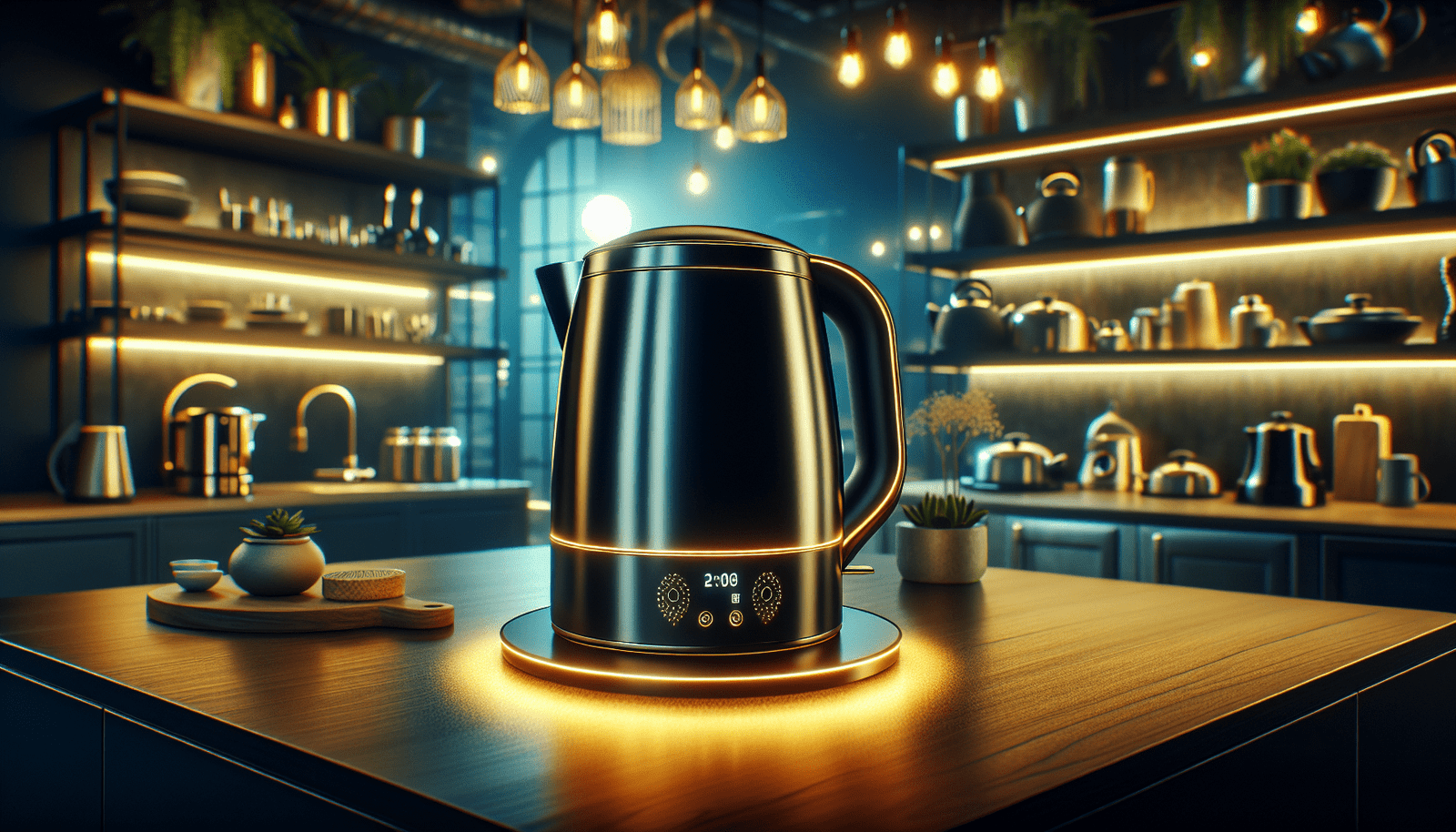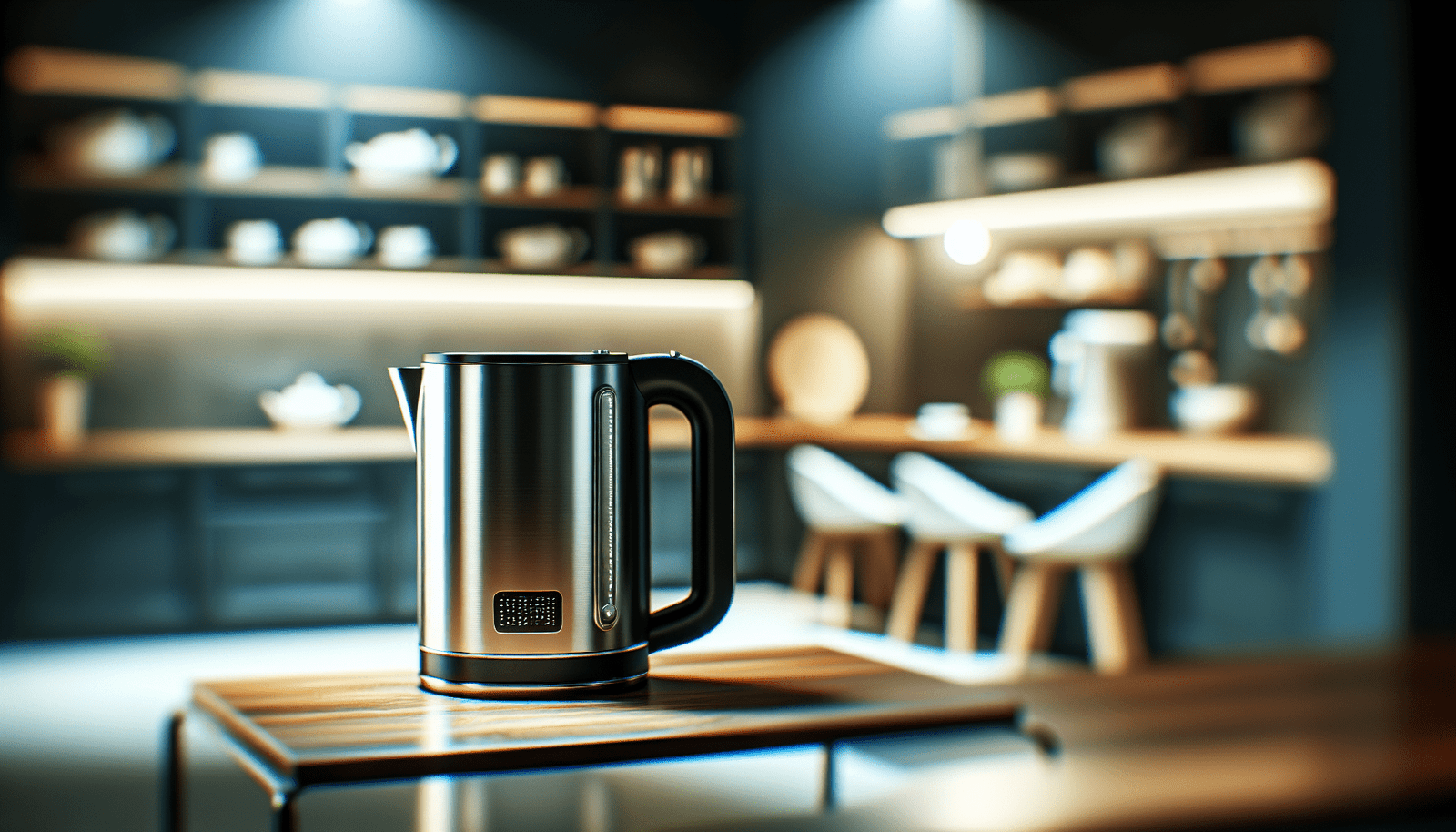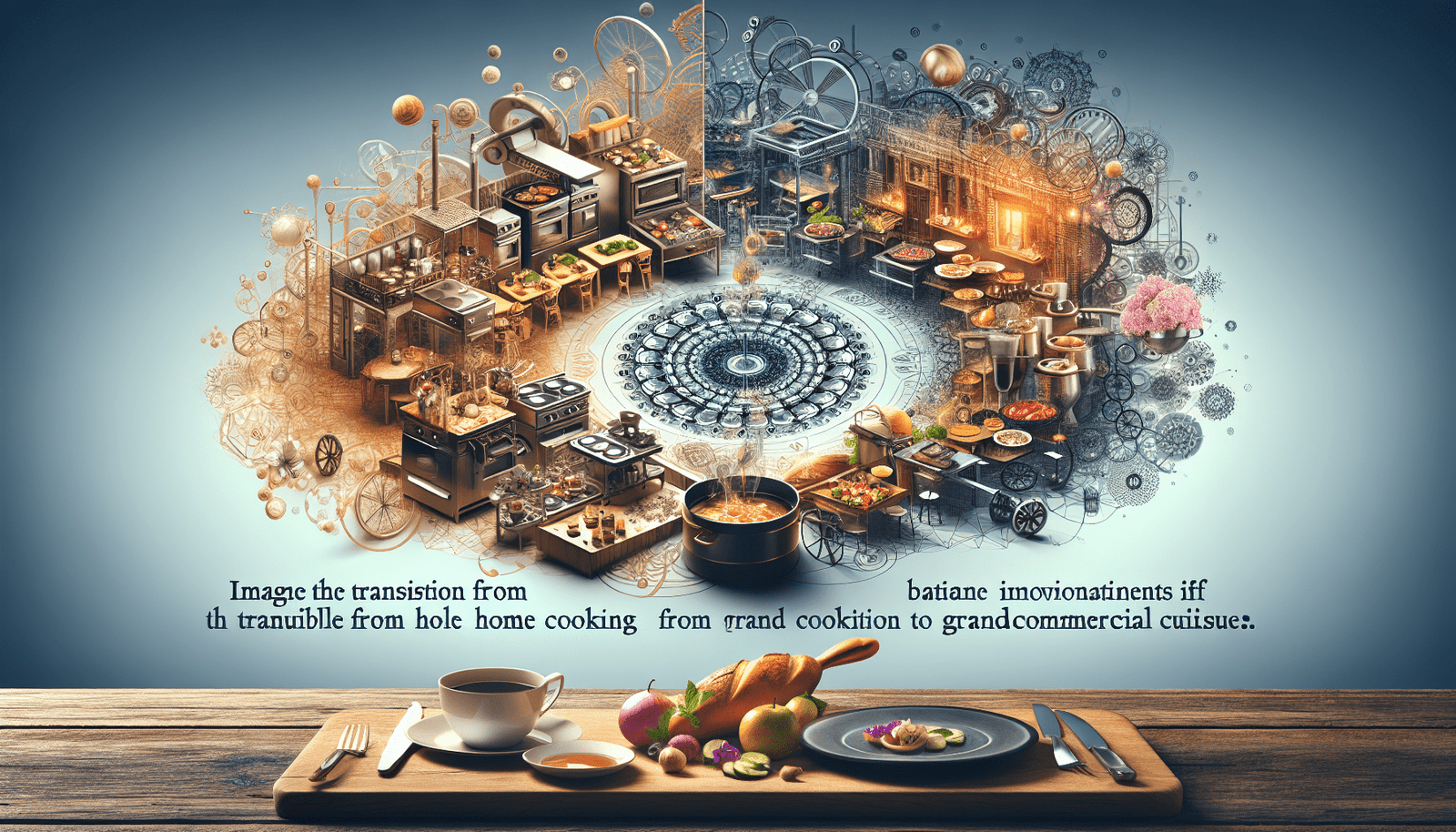If your kitchen is the heart of your home, then finding the perfect electric kettle is like discovering the pulse that keeps it beating with efficiency and joy. “The Ultimate Guide to Choosing Electric Kettles” arms you with all you need to navigate the bustling world of culinary gadgets, transforming your decision-making journey into a breeze. With a keen emphasis on matching your unique cooking style and needs, this comprehensive guide doesn’t just skim the surface. It dives deep into expert reviews, exclusive offers, and the latest in kitchen technology, ensuring the kettle you choose not only boils water but also blends seamlessly into the rhythm of your culinary endeavors, making it an indispensable ally in your quest to create magic in the kitchen. Whether for a cozy home setting or a bustling commercial space, this guide is your trusted companion in elevating your kitchen’s functionality with a touch of innovation and style.
Understanding Electric Kettles
Electric kettles have become indispensable kitchen appliances, offering a swift and convenient way to boil water. Whether you’re a tea aficionado, a coffee enthusiast, or simply need hot water quickly, understanding how electric kettles work can enhance your kitchen routine.
The basics of how electric kettles work
At their core, electric kettles heat water through a heating element. When you switch on the kettle, electricity flows into the heating element, transforming electrical energy into heat. This heat is then transferred to the water, rapidly bringing it to a boil. It’s a straightforward yet efficient process, providing hot water faster than a microwave or stovetop kettle.
Different types of electric kettles
Electric kettles come in various shapes and sizes, designed to meet different preferences and needs. Corded models connect directly to a power source, while cordless ones offer the convenience of a detachable base for easy pouring. Some kettles feature temperature control settings, ideal for brewing specific types of tea or coffee that require precise temperatures.
Advantages of using an electric kettle
The primary benefit of using an electric kettle is speed. They boil water faster than traditional methods, saving time and energy. Electric kettles are also more precise, offering features like temperature control for a perfect brew. Additionally, their automatic shut-off feature enhances safety by preventing the kettle from boiling dry.
Capacity and Size
Choosing the right electric kettle involves considering both its capacity and size, ensuring it meets your daily needs and fits well in your kitchen space.
Determining the right capacity for your needs
Capacity varies from one to two liters in most electric kettles, suitable for single servings or entertaining guests. If you frequently make hot beverages for multiple people, opt for a larger capacity. For personal use, a smaller kettle might suffice.
Comparing sizes and space considerations
Kettle size is not just about capacity but also about how much counter space it occupies. Smaller kitchens benefit from compact models that are easy to store. Remember, larger kettles not only take up more space but also weigh more, especially when filled.
Impact of kettle size on boiling time
Generally, a larger kettle takes longer to boil water due to the greater volume. However, some high-power models are designed to speed up the boiling process, effectively minimizing the difference in boiling time.

Material and Construction
The material of an electric kettle affects its durability, safety, and impact on water taste.
Pros and cons of stainless steel, glass, and plastic kettles
Stainless steel kettles are renowned for their durability and do not impart any flavors to the water. Glass kettles offer a sleek look and let you observe the boiling process, but they require careful handling. Plastic kettles are lightweight and usually more affordable but might affect water taste and quality over time.
Understanding durability and longevity
Stainless steel stands out for longevity, resisting rust and dents. Glass models, while aesthetically pleasing, are prone to cracking if dropped. Plastic, although durable, can degrade with prolonged exposure to heat.
Health and safety considerations
When considering health and safety, look for BPA-free plastics to avoid chemical leaching. Glass and stainless steel are generally safer and more resistant to wear. Additionally, ensure the kettle’s handle is sturdy and heat-resistant to prevent burns.
Speed and Efficiency
For many, the appeal of an electric kettle lies in its ability to quickly boil water. Yet, speed and energy consumption can vary significantly between models.
Evaluating boiling speed
Boiling speed is influenced by the kettle’s wattage, with higher-wattage models heating water faster. When comparing kettles, consider the time they take to boil a given volume of water, keeping in mind that faster isn’t always better if it sacrifices energy efficiency.
Energy efficiency and consumption
Electric kettles are generally energy efficient, requiring less energy to boil water than stovetop kettles or microwaves. Look for models with eco-friendly features, such as automatic shut-off or energy-saving modes, to further reduce consumption.
Comparative analysis of models and brands for efficiency
Comparing models and brands can help identify the most energy-efficient kettles. Reviews and product specifications often highlight efficiency, allowing you to choose a kettle that balances speed with energy use.

Temperature Control Features
The ability to control water temperature is crucial for brewing different types of teas and coffees, each requiring specific temperatures to optimize flavor.
Importance of temperature settings for different beverages
Temperature control is essential for the perfect cup of tea or coffee. For example, green teas often require water at around 175°F, whereas black teas are best brewed at 212°F. Coffee, meanwhile, benefits from temperatures between 195°F and 205°F.
Exploring models with variable temperature control
Many electric kettles now come with variable temperature settings, allowing you to select the precise temperature needed for your beverage. Some even offer pre-set options for various types of tea and coffee, making them incredibly user-friendly.
Benefits of maintaining precise temperatures
Maintaining the right temperature not only enhances flavor but also prevents bitterness and harshness in teas and coffees. This precise control over water temperature can elevate your brewing process, offering a superior tasting experience.
Design and Aesthetics
An electric kettle’s design can impact both its functionality and how well it complements your kitchen’s decor.
Matching your electric kettle with kitchen decor
Electric kettles are available in a wide range of designs, from modern stainless steel to classic porcelain looks. Selecting a kettle that matches your kitchen’s aesthetic can add a touch of style to your countertop.
Ergonomic designs for comfort and safety
Ergonomics play a vital role in the design of electric kettles. Look for models with easy-to-grip handles, straightforward pouring spouts, and lightweight construction to ensure comfort and prevent spills.
Innovative designs and their functional benefits
Innovative designs often incorporate functional benefits, such as spouts with built-in filters or illuminated water windows to gauge the fill level. These features enhance the kettle’s usability and efficiency, making your boiling process smoother and more enjoyable.
Brand and Price Comparison
When it comes to electric kettles, brand reputation and price can be indicators of quality, but great value can be found across the price spectrum.
Identifying reputable brands
Reputable brands often offer reliability and quality assurance, backed by positive customer reviews and ratings. Researching brands can help you find a kettle with a strong track record of performance and durability.
Understanding pricing tiers and what they offer
Electric kettles are available at various price points. Higher-priced models may offer advanced features like precise temperature control or premium materials. However, many affordable kettles provide excellent functionality and reliability without breaking the bank.
Comparing warranties and customer service
Warranties and customer service are important considerations. A longer warranty period and responsive customer service from the manufacturer can offer peace of mind and protect your investment.
Safety Features
Safety features are paramount in preventing accidents and ensuring the electric kettle’s secure operation.
Auto shut-off and boil-dry protection
Auto shut-off automatically turns the kettle off once the water has boiled, while boil-dry protection prevents the kettle from operating without water, protecting the heating element. Both are crucial for safety and energy conservation.
Cool-touch handles and exterior
Cool-touch features ensure that the kettle’s exterior and handle remain cool to the touch, even when the water is boiling. This prevents burns and makes the kettle safer to handle.
Certifications to look for
Safety certifications, such as those from Underwriters Laboratories (UL) or similar organizations, indicate that the kettle has passed rigorous testing for safety standards. Always check for these certifications when choosing a kettle.
Cleaning and Maintenance
Regular cleaning and maintenance are vital for keeping your electric kettle in optimal condition and prolonging its lifespan.
Regular cleaning for optimal performance
Regularly emptying the kettle and wiping it down can prevent mineral buildup and maintain its appearance. Ensure the appliance is unplugged and cooled before cleaning.
Descaling methods and frequency
Hard water can leave mineral deposits inside your kettle, affecting its performance. Descaling involves filling the kettle with a mixture of water and vinegar and boiling it. This process, done every few months, can help maintain the kettle’s efficiency.
Tips for long-term electric kettle care
To ensure the longevity of your electric kettle, avoid leaving water in it after use, descale regularly, and follow the manufacturer’s cleaning instructions. Proper care will keep your kettle running smoothly for years to come.
Making Your Decision
Choosing the right electric kettle involves balancing various factors, from functionality and size to design and price.
Balancing needs, features, and budget
Consider what features are most important to you, such as speed, temperature control, or design, and how they align with your budget. There’s a kettle for every need and price range, so focusing on your priorities will guide your decision.
Considering long-term use and versatility
Opt for a kettle that not only meets your current needs but will also adapt to future preferences. A versatile appliance that can brew teas, coffees, and other hot beverages will serve you well over time.
Final checklist before making a purchase
Before finalizing your purchase, ensure the kettle has the capacity, speed, and features you need. Check for safety features and certifications, and consider the brand’s reputation and warranty offerings. This careful consideration will help you choose an electric kettle that enhances your kitchen experience for years to come.


